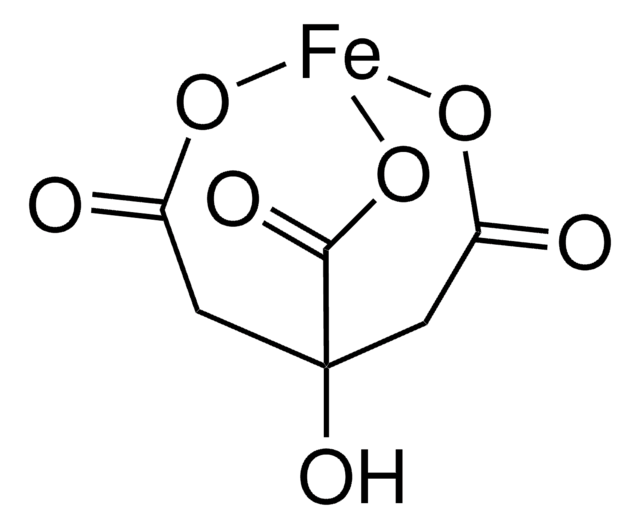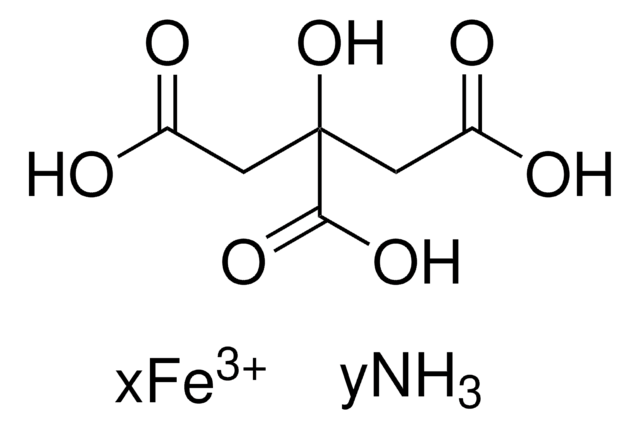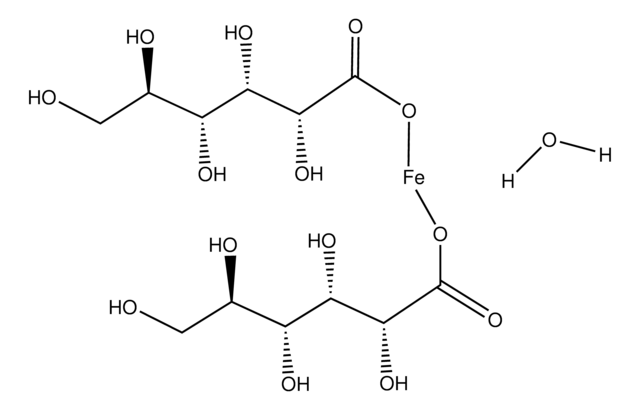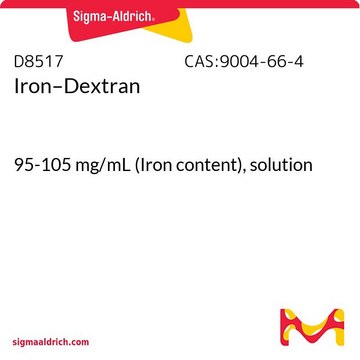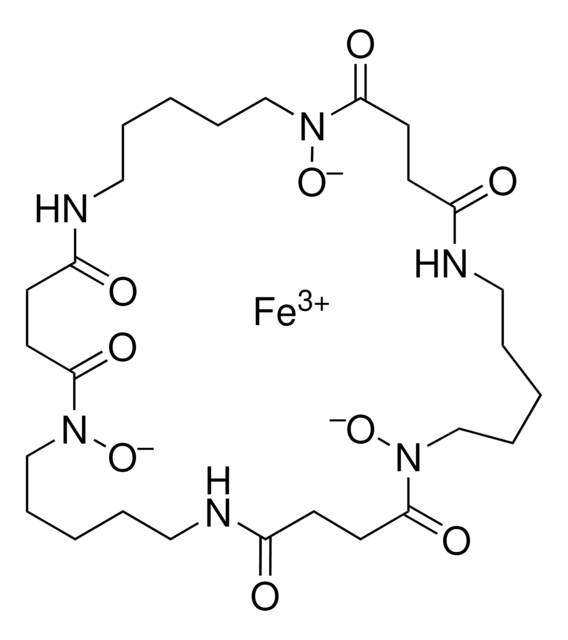おすすめの製品
グレード
technical grade
フォーム
powder
組成
Fe, 16.5-18.5%
テクニック
cell culture | mammalian: suitable
アプリケーション
battery manufacturing
SMILES記法
OC12CC(=O)O[Fe](OC(=O)C1)OC2=O
InChI
1S/C6H8O7.Fe/c7-3(8)1-6(13,5(11)12)2-4(9)10;/h13H,1-2H2,(H,7,8)(H,9,10)(H,11,12);/q;+3/p-3
InChI Key
NPFOYSMITVOQOS-UHFFFAOYSA-K
類似した製品をお探しですか? 訪問 製品比較ガイド
詳細
アプリケーション
また、汚染水の処理のためのテトラサイクリンの分解にも使用できます。
保管分類コード
11 - Combustible Solids
WGK
WGK 2
引火点(°F)
Not applicable
引火点(℃)
Not applicable
個人用保護具 (PPE)
Eyeshields, Gloves, type N95 (US)
適用法令
試験研究用途を考慮した関連法令を主に挙げております。化学物質以外については、一部の情報のみ提供しています。 製品を安全かつ合法的に使用することは、使用者の義務です。最新情報により修正される場合があります。WEBの反映には時間を要することがあるため、適宜SDSをご参照ください。
労働安全衛生法名称等を表示すべき危険物及び有害物
名称等を表示すべき危険物及び有害物
労働安全衛生法名称等を通知すべき危険物及び有害物
名称等を通知すべき危険物及び有害物
Jan Code
F6129-VAR:
2530107:
F6129-BULK:
F6129-1KG:4548173964546
F6129-250G:4548173964553
この製品を見ている人はこちらもチェック
資料
Plasmonic nanoparticles have unique optical properties that can be tailored to suit a variety of applications in the biotechnology1–8 and electronics9–16 industries.
ライフサイエンス、有機合成、材料科学、クロマトグラフィー、分析など、あらゆる分野の研究に経験のあるメンバーがおります。.
製品に関するお問い合わせはこちら(テクニカルサービス)